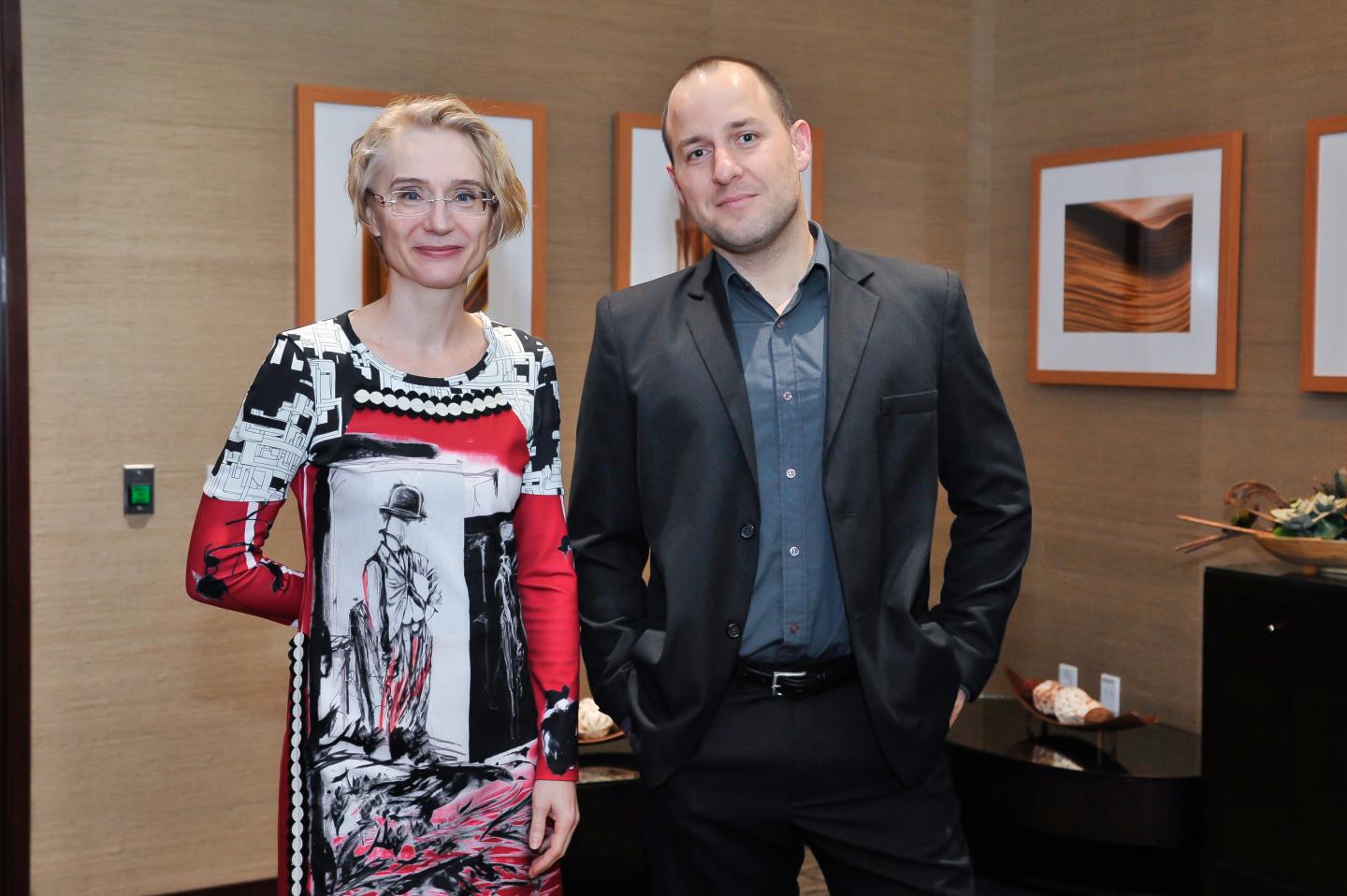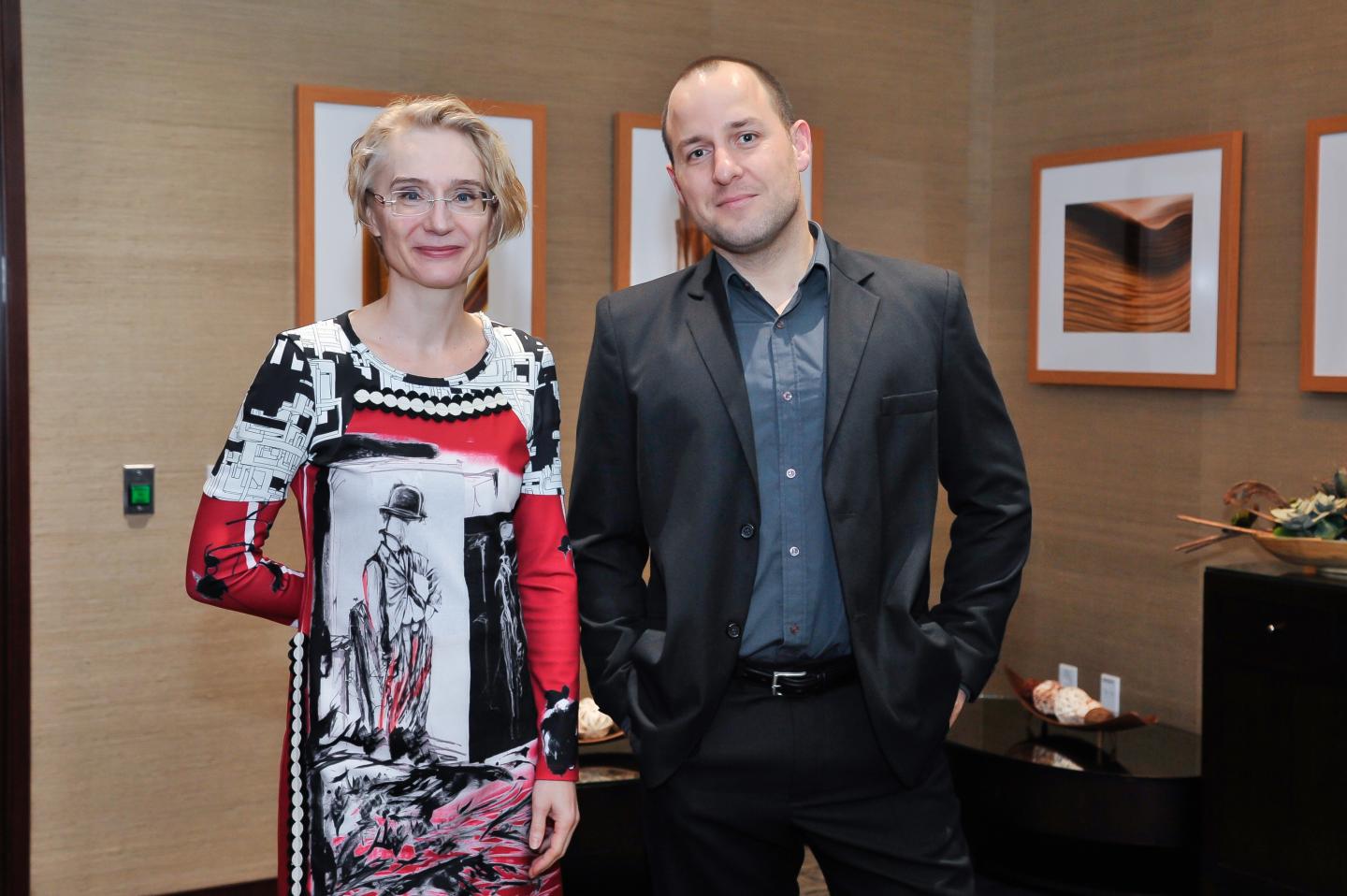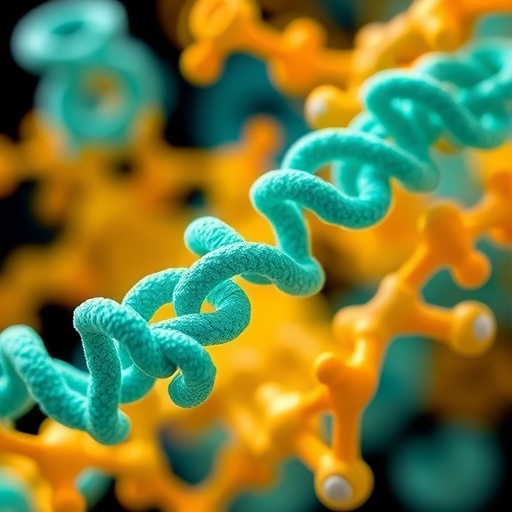
Credit: The Scripps Research Institute
JUPITER, FL — March 5, 2018 — An estimated 10 million people worldwide are living with Parkinson's disease–an incurable neurodegenerative disorder that leads to an increasing loss of motor control.
If we could peer into the brains of these patients, we'd see two hallmarks of the disease. First, we'd see a die-off of the brain cells that produce a chemical called dopamine. We'd also see protein clumps called Lewy bodies inside the neurons.
Corinne Lasmézas, DVM, PhD, a professor on the Florida campus of The Scripps Research Institute (TSRI), believes a key to treating Parkinson's is to study possible links between these two phenomena.
Now her group has discovered a connection between neuronal death and Lewy bodies. The research, published recently in the journal Proceedings of the National Academy of Sciences, offers an explanation for why neurons die off in the first place.
'This study identifies the missing link between Lewy bodies and the type of damage that's been observed in neurons affected by Parkinson's," says Lasmézas, senior author of the study. "Parkinson's is a disorder of the mitochondria, and we discovered how Lewy bodies are releasing a partial break-down product that has a high tropism for the mitochondria and destroys their ability to produce energy."
Toxic protein travels to mitochondria to do damage
Lewy bodies were described a century ago, but it was not until 1997 that scientists discovered they were made of clumps of a misfolded protein called α-synuclein. When it's not misfolded, α-synuclein is believed to carry out functions related to the transmission of signals between neurons.
Lasmézas' research focuses on neurological disorders caused by misfolded proteins, such as Alzheimer's, Parkinson's, prion diseases, frontotemporal dementia and amyotrophic lateral sclerosis (ALS, Lou Gehrig's disease). She uses lab models, including cell cultures and mice, to study these diseases.
In the current study, Lasmézas and her team looked at cell cultures of neurons that were induced to accumulate fibrils made of misfolded α-synuclein, mimicking Lewy bodies in patients with Parkinson's. They discovered that when α-synuclein fibrils are broken down, it often creates a smaller protein clump, which they named pα-syn* (pronounced "P-alpha-syn-star").
"Sometimes the nerve cells can efficiently degrade the α-synuclein fibrils, but if they get overwhelmed, the degradation may be incomplete," she explains. "And it turns out that the result of that partial degradation, pα-syn*, is toxic."
Diego Grassi, PhD, a research associate in Lasmézas' lab, made this discovery by labeling the pα-syn* with an antibody so he could follow it throughout the cell after it was created. He observed that pα-syn* traveled and attached itself to the mitochondria. Further investigation revealed that once the pα-syn* attached, the mitochondria started to break down. These fragmented mitochondria lose their ability to carry an electrochemical signal and produce energy.
The researchers followed up with an analysis of mouse and human brain samples. They confirmed the existence of pα-syn* in the dopamine-producing neurons.
"The Lewy bodies are big aggregates and they're sitting in the cell, but they don't come into direct contact with the mitochondria in the way pα-syn* does," Lasmézas explains. "With Diego's discovery, we've made a direct connection between the protein α-synuclein and the downstream effects that are observed when brain cells become damaged in Parkinson's."
Lasmézas plans to continue studying the connection between misfolded proteins and the destruction of mitochondria in neurons. "What we found may not be the only mechanism of toxicity, but we know it's important," she says. "This paper is about identifying where pα-syn* comes from and what it does to the mitochondria, but there's obviously, mechanistically, a lot that we still don't know."
She says that these findings also have implications for designing treatments for Parkinson's, noting that some drugs currently under development are focused on getting rid of larger fibrils that make up Lewy bodies.
"It's important to be aware that when Lewy bodies are broken down, these toxic substances may be created," Lasmézas says. In addition, she adds, the discovery of pα-syn* as an important component of the disease process points to a new target for creating drugs slowing disease progression.
###
First author of the study, "Identification of a highly neurotoxic α-synuclein species inducing mitochondrial damage and mitophagy in Parkinson's disease," was Diego Grassi. Other authors were Shannon Howard, Minghai Zhou, Natalia Diaz-Perez, and Philip LoGrasso of The Scripps Research Institute; Nicolai T. Urban, Debbie Guerrero-Given, and Naomi Kamasawa of the Max Planck Florida Institute for Neuroscience; and Laura Volpicelli-Daley of the University of Alabama at Birmingham.
This research was funded by the National Institute of Neurological Disorders and Stroke (grant R01NS085223), the Michael J. Fox Foundation and the Saul and Theresa Esman Foundation.
About The Scripps Research Institute
The Scripps Research Institute (TSRI) is one of the world's largest independent, not-for-profit organizations focusing on research in the biomedical sciences. TSRI is internationally recognized for its contributions to science and health, including its role in laying the foundation for new treatments for cancer, rheumatoid arthritis, hemophilia, and other diseases. An institution that evolved from the Scripps Metabolic Clinic founded by philanthropist Ellen Browning Scripps in 1924, the institute now employs more than 2,500 people on its campuses in La Jolla, CA, and Jupiter, FL, where its renowned scientists–including two Nobel laureates and 20 members of the National Academies of Science, Engineering or Medicine–work toward their next discoveries. The institute's graduate program, which awards PhD degrees in biology and chemistry, ranks among the top ten of its kind in the nation. In October 2016, TSRI announced a strategic affiliation with the California Institute for Biomedical Research (Calibr), representing a renewed commitment to the discovery and development of new medicines to address unmet medical needs. For more information, see http://www.scripps.edu.
Media Contact
Stacey Singer DeLoye
[email protected]
561-228-2551
@scrippsresearch
http://www.scripps.edu
Original Source
https://www.scripps.edu/news/press/2018/20180305parkinsons_neurons.html http://dx.doi.org/10.1073/pnas.1713849115





